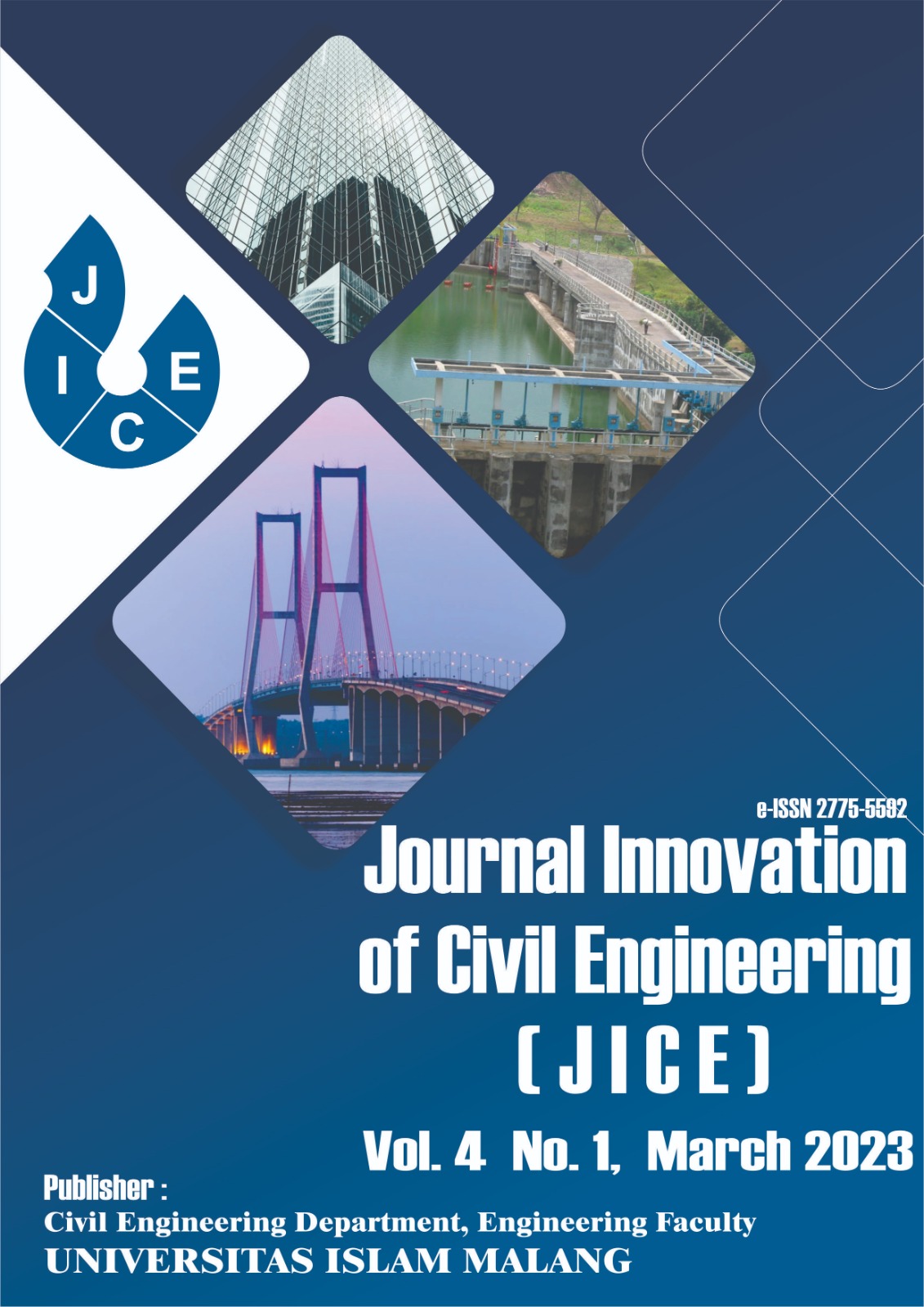LINEAR EQUATION OF SLUICE OPENING HEIGHT AGAINST FLOW VELOCITY WITH WET DEPTH IN IOT-BASED IRRIGATION CANALS IN SUKOANYAR VILLAGE
DOI:
https://doi.org/10.33474/jice.v4i1.19886Abstract
When using floodgates, which can waste water or even cause a shortage if not used properly, it is crucial to pay attention to the regulation of irrigation water. setting up In this study, the Internet of Things (IoT)-based technology can be used to measure when the floodgates open. Farmers that use this technology can better manage water in irrigation systems and planting systems. This study examines the mathematical relationship between the height of irrigation gates based on the Internet of Things and the hydraulics of the flow in the irrigation canals of Sukoanyar Village, Pakis District. Each door opening height has six points, with four points occurring before the door and two points following the door. The size of the sluice gate, the topography of the canal, and the speed of the water flow are the data that were analyzed for this study. The calculation of the channel geometry values comes first in the analysis process, which is followed by the processing of the flow velocity values for each experimental result. The goal of the five experiments conducted at each place was to directly measure the flow velocity using current meter equipment. Using a nonlinear equation mathematical analysis, the study's findings revealed that the height of the irrigation sluice gate (IoT) has an impact on the change in the canal's dynamics value.
Keywords: Nonlinear; Irrigation; Internet of Things; Watergates.
Downloads
Published
How to Cite
Issue
Section
License
Copyright (c) 2023 Soraya Norma, Eko Noerhayati, Bambang Supapto, Muhammad Rizal A’rofi

This work is licensed under a Creative Commons Attribution-ShareAlike 4.0 International License.
Journal Innovation of Civil Engineering (JICE) with registration number ISSN 2775-5592 (online) published by Universitas Islam Malang by applying for copyright and License.
Copyright:
- Copyright in each text is the property of the author.
- The author agrees that JICE has the right to the first license issued with a Creative Commons Attributions-ShareAlike 4.0 International License.
- The author can write the article separately through non-exclusive distribution with other versions related to the first published article in the Journal Innovation of Civil Engineering (JICE).
License:
- Attribution: You must give appropriate credit, provide a link to the license, and indicate if changes were made. You may do so in any reasonable manner, but not in any way that suggests the licensor endorses you or your use.
- ShareAlike: If you remix, transform, or build upon the material, you must distribute your contributions under the same license as the original.
- No additional restrictions: You may not apply legal terms or technological measures that legally restrict others from doing anything the license permits.
You are free to:
- Share a copy and redistribute this material in any form or format.
- Change and make derivatives of this material for any purpose, including commercial interests.
The licensor cannot revoke the above conditions as long as the authors comply with the terms of this license.




